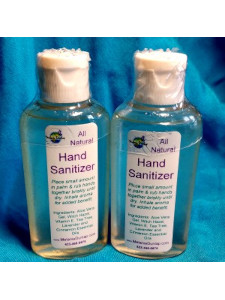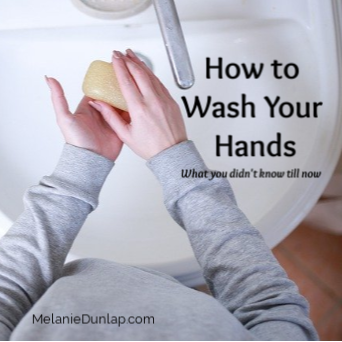Global events have made how to wash your hands a major news headline these days. Not surprising since handwashing is one of the best ways to avoid getting sick and spreading illness.
There was a time that doctors believed water might be the cause of disease so they wouldn’t wash their hands. Seems silly to us now, but in 1846 when Hungarian doctor Ignaz Semmelweis imposed a new rule mandating handwashing for doctors in the maternity ward he was met with disapproval and disdain. The rates of death in his maternity ward fell dramatically with handwashing.
Florence Nightingale was another champion of handwashing. During the Crimean War she implemented handwashing and other hygiene practices in the war hospital, thereby reducing infections and saving soldiers’ lives.
Not many people listened to Semmelweis and Nightingale, so the practice of handwashing wasn’t widely promoted. In fact, it took a string of foodborne outbreaks and healthcare-associated infections in the 1980’s to prompt the CDC to identify hand hygiene as an important way to prevent the spread of infection.
Today we understand the importance of washing our hands to stay healthy. There is even a Global Handwashing Day on October 15th to help spread the word.
When to Wash Your Hands
Germs are easily transmitted from your hands to your eyes, nose or mouth where they can get into your body. As you touch surfaces throughout the day you accumulate germs on your hands. Washing your hands regularly can reduce your chances of getting sick.
You should wash your hands when they are visibly dirty. I know you knew that, but I like to state the obvious. Here are other times you should wash.
- Before, during and after preparing food
- Before eating food
- Before and after treating a cut or wound
- Before and after caring for a sick person
- Before inserting or removing contact lenses
- After using the toilet, changing diapers or cleaning up a child who has used the toilet
- After blowing your nose, coughing or sneezing
- After handling garbage
- After touching an animal, animal feed or animal waste
How to Wash Your Hands
You may be inclined to skip this part, after all you know how to wash your hands. But a little refresher couldn’t hurt.
- Wet your hands with clean running water, either warm or cold. (Warmer water does not protect against bacteria any better than cold water does.)
- Apply soap and lather well.
- Scrub your hands for at least 20 seconds. Remember to get the back of your hands, wrists, between your fingers and under your fingernails.
- Rinse your hands under running water.
- Dry your hands using a clean towel or air dryer.
You may have heard that you can sing the happy birthday song twice to make the 20 second mark but that depends on how fast you sing. You could just slowly count to 20 or use 1 Mississippi, 2 Mississippi, etc. However you choose to mark the time, the more important thing is that you scrub every part of your hands.
What About the Soap?
Surprisingly, soap can be a source of contamination if not treated properly. If you leave your soap in a wet puddle on the edge of your sink it gives bacteria a place to multiply. When you use that soap, germs transfer onto your hands instead of off.
In a study of soap contamination, even perfect handwashing technique could not stop the increase of bacteria on hands that were washed with contaminated soap. Not just the soap is to blame but also the dispensers. The same study found that dispensers filled from giant refillable bottles of liquid soap were the worst offenders.
When it comes to handwashing, how much you scrub, and the use of water makes more of an impact on hand germs than soap. Germs cling to our hands with gusto and soap is ineffective if we don’t do the rest of the routine.
If you search for hand soap on the CVS website, you get 165 products. So how do you choose a good soap? Use the same guidelines you use for your food. Make it as natural as possible. Stay away from unnecessary dyes, fillers and chemicals. Studies have shown that antibacterial soaps are no more effective than regular soap and in some cases they can even be harmful.
Remember, you are what you put on your skin.
Hand Sanitizers
Hand sanitizer isn’t new, it was developed and patented in 1966 by a student nurse named Lupe Hernandez. Like most Americans you probably never heard of it until 2009 when the H1N1 swine flu pandemic helped it go viral. That year sales jumped 70% in just six months.
It wasn’t just the flu that helped spike sales, it was packaging. Marketers pushed child-friendly colors like bubblegum pink and wellness-friendly scents like lavender to drive consumers to their products.
Despite all the hype, handwashing is still a better option. Sanitizers don’t eliminate all types of germs and are often used incorrectly.
Hand sanitizers are only recommended when soap and water are not available.
The biggest drawback to using sanitizer is the alcohol, which can cause irritation and skin sensitivity by drying out the skin and removing natural oils. Damaged skin increases your vulnerability to infection.
Another concern about alcohol-based hand sanitizers is using it with young children. The CDC recommends using a hand sanitizer with at least 60% alcohol, a stronger alcohol than most hard liquors. By comparison, wine contains 10-15% alcohol and beer 5-10% alcohol.
According to the American Association of Poison Control Centers even a small amount of alcohol can cause poisoning in children. As of February 29, 2020, poison control centers have managed 3,260 cases of hand sanitizer exposure in children 12 and under.

Personally, I’m not a fan of alcohol-based sanitizers. A few years ago I developed my All Natural Hand Sanitizer made with witch hazel, aloe, vitamin e, tea tree, lavender and cinnamon essential oils. I will admit I’ve sold several bottles lately.
Paper vs Air
You are in a public restroom faced with an air dryer and paper towels to use after washing your hands. Which do you choose?
You might be surprised to find that a study by Mayo Clinic concluded that from a hygiene standpoint “Paper towels are superior to air dryers.” They found that towels dry your hands quicker and more thoroughly than dryers do, and contamination happens more through wet hands than dry.
Something as simple as washing your hands can have a huge impact on your health and the health of your family and your community.
